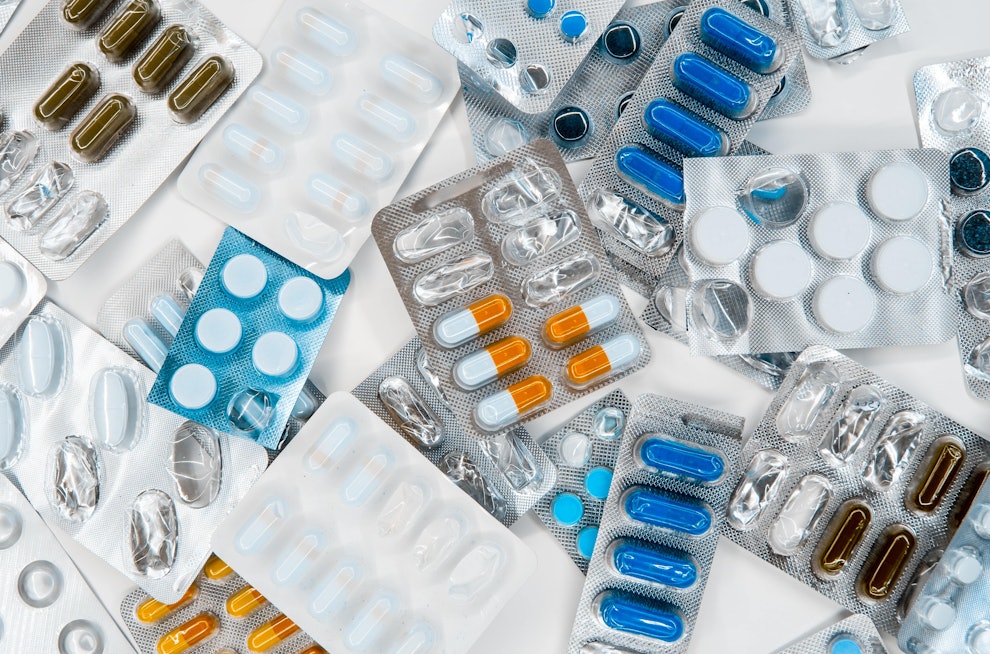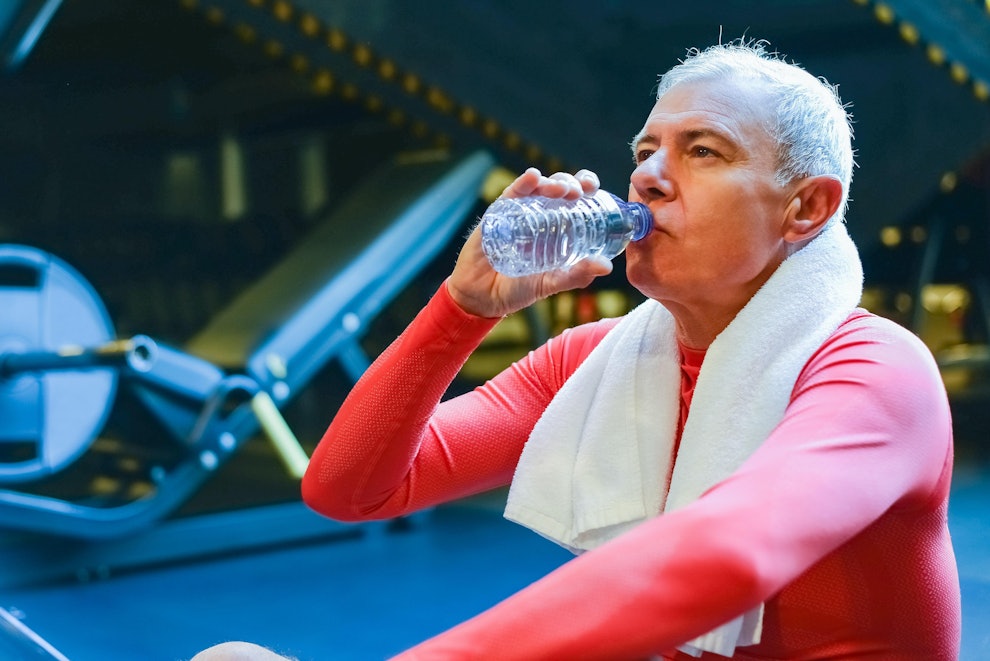6 Kidney Stone Symptoms & How To Treat Them
Article at a glance
Kidney stones are hard, stone-like materials that form in the kidneys due to high levels of certain minerals, like calcium.
Kidney stones can range from small to large and can cause a severe amount of pain if not addressed.
There are multiple treatment options for kidney stones, and ways to help manage systems effectively.

What Are Kidney Stones?
According to the National Institute of Diabetes and Digestive and Kidney Diseases (NIDDK), a kidney stone is defined as “hard, pebble-like pieces of material that form in one or both of your kidneys when high levels of certain minerals are in your urine.” These pieces can also form anywhere along your urinary tract (in places such as your bladder, urethra, or ureter).
The size and type of kidney stones can determine the severity of the medical issues they cause, ranging from mild discomfort to excruciating pain and complications. Smaller stones may pass through the urinary tract with minimal pain, while larger stones may require medical intervention and pose a greater risk of complications.

Causes of Kidney Stones
The causes of kidney stones vary depending on the substance the stone forms from. The main cause of kidney stones is high levels of stone-forming substances in the urine, including:
- Calcium
- Oxalate
- Phosphorous
These minerals are already present in urine and aren’t a cause of medical attention at low levels.
While these minerals are naturally present in urine, they can become problematic at high levels. The buildup of these substances can come from eating certain foods and beverages that contain high amounts of the mineral, especially if a person is already at risk or has a history of kidney stones.

Types of Kidney Stones
There are a few different types of kidney stones that can form, such as calcium stones, uric acid stones, and more. The type of stone forme depends on the stone-forming substances present in the urine.
Calcium Stones
Calcium stones (also known as calcium oxalate kidney stones) are the most common type of kidney stone. They are usually made from a substance called calcium-oxalate, though some are formed from calcium phosphate.
Foods high in calcium oxalate can be the main contributor to the formation of calcium stones. Some examples of calcium-oxalate-rich foods include:
- Spinach
- Peanuts
- Chocolate
- Other nuts/nut products
Uric Acid Stones
Uric acid stones occur when acidic levels are too high in the urine. They are the second most common type of kidney stone, and typically occur in those with certain conditions, including:
- Gout
- Diabetes
- Obesity
- Metabolic conditions such as high blood pressure or high blood sugar
These stones have a higher chance of forming if a person’s diet includes large amounts of foods that increase acid levels, such as:
- Fish
- Shellfish
- Meat
Struvite Stones
Struvite stones are composed of struvite (also known as magnesium ammonium phosphate), and occur when urine becomes too alkaline, or not acidic enough. These are less common, and usually occur in people with repeated urinary tract infections (UTIs) or can be the result of kidney infections. Treating an underlying urinary tract infection or a kidney infection can help prevent stones from forming.
Cystine Stones
Cystine stones are the rarest type, and are formed from cystine, an amino acid that occurs naturally in the body. These stones usually affect those with cystinuria, an inherited condition that causes cystine acid to form stones in the kidneys. These stones typically form when cystine leaks from the kidneys into a person’s urine.
Symptoms of Kidney Stones
Symptoms of kidney stones may vary depending on the size. A person may pass small kidney stones without experiencing symptoms at all as small stones tend to pass through the body undetected. However, larger kidney stones can result in symptoms that include:
- Severe pain in the lower abdomen, back or side, and/or the groin.
- Blood in the urine that makes urine appear pink, red, or brown in color.
- Nausea or vomiting as a result of dealing with severe pain.
- Abnormal urine, such as it being foul-smelling, cloudy, or discolored.
- Abnormal urination, such as frequently needing to pee, feeling the urge to pee but not being able to urinate, and/or experiencing pain during urination.
- Fever or chills can occur if there is an infection.
Note: If experiencing any of these symptoms, see a healthcare professional right away.

Risk Factors
There are a few risk factors that contribute to developing kidney stones, including
Family or personal history
Gender: both men and women can get kidney stones, but men have a higher risk
Hydration levels: not drinking enough water can result in kidney stones
Digestive diseases: such as inflammatory bowel disease can increase one’s risk of developing kidney stones
Surgeries: gastric bypass surgery and others may increase one’s risk of developing kidney stones
Diet: certain diets that are high in protein, salt, or sugar increases one’s risk of kidney stone development
Chronic Conditions: certain medical conditions, such as cystinuria or those that frequently get UTIs are more at risk of developing kidney stones

How Are Kidney Stones Diagnosed?
In order for a kidney stone to be diagnosed, a complete physical exam and a health history assessment are required. Additionally, blood tests might be given to check the body’s levels of calcium, phosphorus, or uric acid. Other tests can be done to check for or rule out blockages, such as abdominal x‑rays, an ultrasound of the kidney, or a CT Scan.
A healthcare provider may also request that a kidney stone is captured and brought in so the type of kidney stone can be determined.
When To Seek Medical Attention
Kidney stones in some cases may be small enough to pass without medical intervention and can do so without a person experiencing any symptoms. However, if you experience any symptoms such as severe pain in one side of the back or blood in your urine, seek medical attention immediately.
Passing a Kidney Stone
Passing a kidney stone can range from a matter of days to a matter of weeks, depending on the size, location, and how far along it is when discovered.
A kidney stone must first pass through the kidney, enter the ureter, enter the bladder, and then reach the urethra. The majority of the pain occurs when the stone is in the kidney and moving through the ureter. Once the stone reaches the bladder, the pain typically subsides.
In general, kidney stones may pass in a week or two, but some can take up to three weeks. If the stone has not passed after four weeks, surgery may be required to remove it.

Treatments for Kidney Stones
Kidney stones can be treated in various ways, such as flushing out the stone, managing pain, and performing surgery.
Passing The Stone Naturally
The primary approach for treating kidney stones typically involves natural methods to promote the passage of the stone. Drinking 6–8 glasses of water per day is recommended to increase urination, which can facilitate the movement of the stone through the urinary tract.
Pain Management
To help alleviate severe pain, a healthcare provider may administer or recommend medication. Narcotic medicines may be prescribed in cases of extreme pain and antibiotics will be given if there is an infection present.
For less painful situations, medications such as ibuprofen, acetaminophen, or naproxen sodium may be prescribed. Additionally, non-medicated options such as a heating pad or taking a hot bath may help to alleviate discomfort.
Lithotripsy
Lithotripsy is a medical procedure that uses shockwaves in the kidney to help break up larger stones so they can pass through the urinary tract. Light anesthesia may be used, as the procedure can cause discomfort.
Ureteroscopy
If a kidney stone becomes stuck in the ureter or the bladder, a healthcare provider may perform a ureteroscopy to retrieve it. A ureteroscopy involves inserting a ureteroscope (a small camera attached to a wire) through the urethra into the bladder. A small cage on the instrument is then used to capture the stone and remove it.
Complications From Kidney Stones
While kidney stones usually pass on their own or with aid from medication/surgery, there can be some complications if a kidney stone is not addressed or taken care of, including:
- Hematuria, otherwise known as frequent blood during urination
- UTIs
- Severe pain due to a stone blocking the urinary system and preventing urination
- Possible loss of kidney function/infection
If symptoms of kidney stones are present, seeking medical help is important to prevent complications.

Ways To Prevent Kidney Stones
While kidney stones can happen for a variety of reasons, there are some ways to help prevent them from forming, including
- Staying properly hydrated: drinking plenty of water and fluids prevents dehydration, which is a common factor in kidney stone formation.
- Eating more fruits and vegetables: consuming more fruits and vegetables, such as oranges, grapefruits, broccoli, and lettuce can help make the urine less acidic.
- Reducing salt intake: high sodium foods and diets can help create kidney stones, so using salt in moderation can aid in prevention.
- Reducing animal protein: animal proteins such as beef, pork, chicken, and fish can increase levels of uric acid, contributing to uric acid stones.
- Limiting foods with high oxalate: those who are prone to calcium oxalate kidney stones should limit foods such as spinach, berries, chocolate, wheat bran, nuts, beets, tea and rhubarb.
- Getting enough calcium: despite the name “calcium stones,” having an appropriate intake of calcium foods can actually prevent kidney stones, because calcium from foods such as dairy binds with oxalate before they reach the kidneys. Talk to your healthcare provider regarding the appropriate amount of calcium for you.
- Taking medication: certain medications can be taken that will help prevent the formation of kidney stones, such as:
- Allopurinol for uric acid stones
- Thiazide diuretics for calcium stones
- Sodium bicarbonate or sodium citrate to make the urine less acidic
- Phosphorus solutions to help prevent calcium stones from forming

Are Kidney Stones Common?
Kidney stones are a relatively common condition as they can affect as many as 10-15% of the U.S. population, and 1 in 10 people will likely experience at least one kidney stone in their lifetime.
Can Kidney Stones Be Prevented?
A person can take measures to potentially prevent kidney stones, such as maintaining proper hydration and making dietary changes. However, it's worth noting that certain factors such as gender, underlying medical conditions, and genetics may also play a role in the development of kidney stones.
Are Kidney Stones Serious?
Untreated kidney stones can lead to serious complications such as kidney infections, which may pose a risk to your health and even be life-threatening. If you experience symptoms of kidney stones, seeking medical attention promptly is essential to prevent further complications.
What is the Fastest Way to Relieve Kidney Stone Pain?
It’s important to discuss pain relief options with a provider before moving forward with a treatment plan as treatments can vary depending on stone size and its location in the body. However, common treatments for quick relief can include:
Taking pain medications such as ibuprofen (Advil), naproxen (Aleve), or acetaminophen (Tylenol)
Staying hydrated by drinking plenty of water and other fluids
Using a heating pad on the affected area or taking a warm bath
Do Kidney Stones Require Hospitalization?
Although some kidney stones can pass naturally, others can cause severe symptoms that require medical attention. If the stone doesn't pass and the symptoms worsen, healthcare professionals may need to intervene, which could include a visit to the emergency room and possibly hospitalization.
Will the ER remove my Kidney Stone?
If the stone is small enough to pass on its own, then you will likely be encouraged to drink plenty of fluids to help the process. If the stone is large or causes a blockage, ER personnel may use techniques to either break up the stone, such as lithotripsy, or surgically remove it through ureteroscopy.
Sources
- https://www.niddk.nih.gov/health-information/urologic-diseases/kidney-stones/definition-facts
- https://www.kidney.org/atoz/content/kidneystones#prevention
- https://www.niddk.nih.gov/health-information/kidney-disease/kidneys-how-they-work
- http://www.kidneyfund.org/kidney-disease/kidney-problems/kidney-stones/
- https://www.niddk.nih.gov/health-information/urologic-diseases/urinary-tract-how-it-works
- https://www.urologyspecialistsofmilford.com/blog/552594-kidney-stone-diet-foods-to-eat-and-avoid
- https://pubmed.ncbi.nlm.nih.gov/27188687/
- https://www.kidney.org/news/ekidney/november10/Top10_November10
- https://www.betterhealth.vic.gov.au/health/conditionsandtreatments/kidney-stones
- https://www.kidney.org/atoz/content/diet
Become a patient
Experience the Oak Street Health difference, and see what it’s like to be treated by a care team who are experts at caring for older adults.




